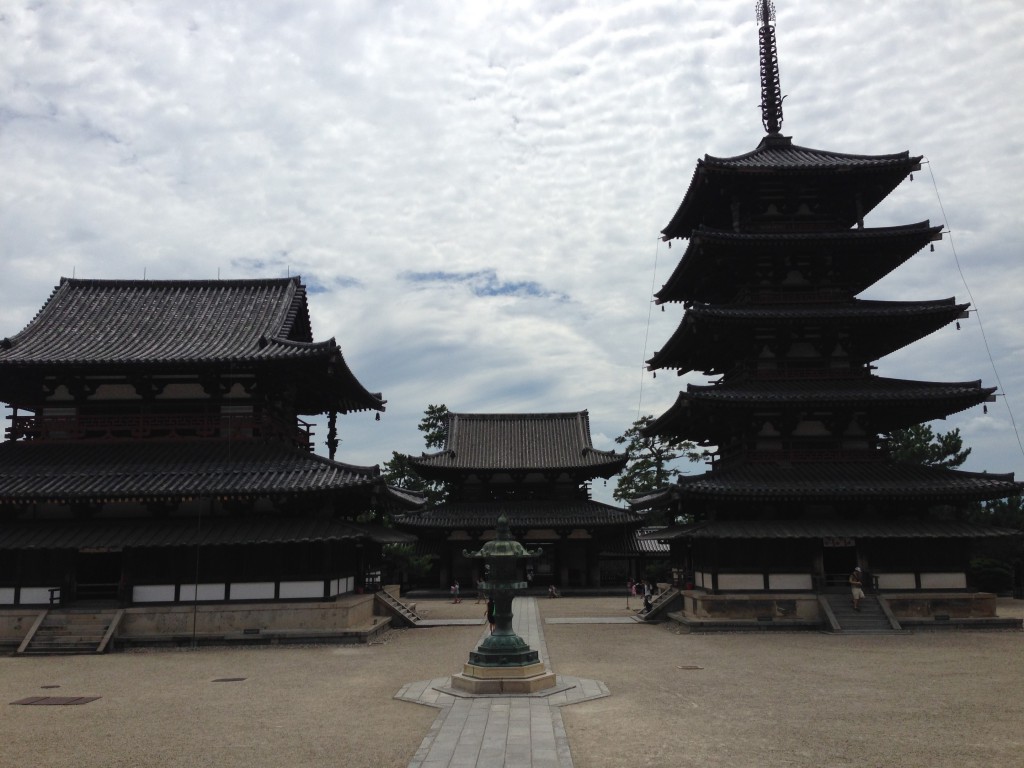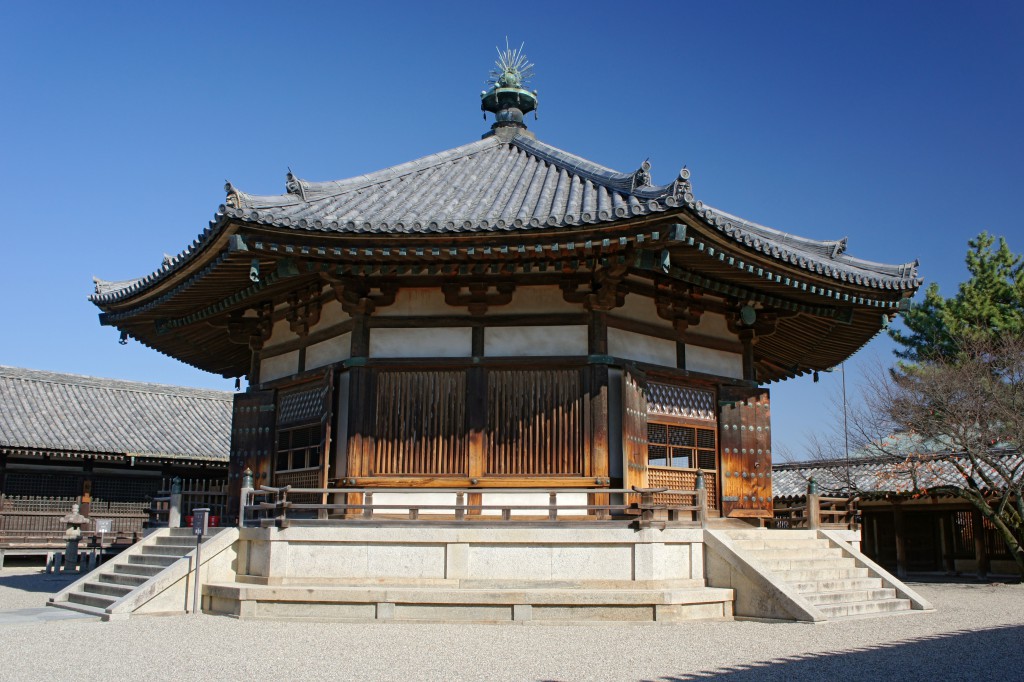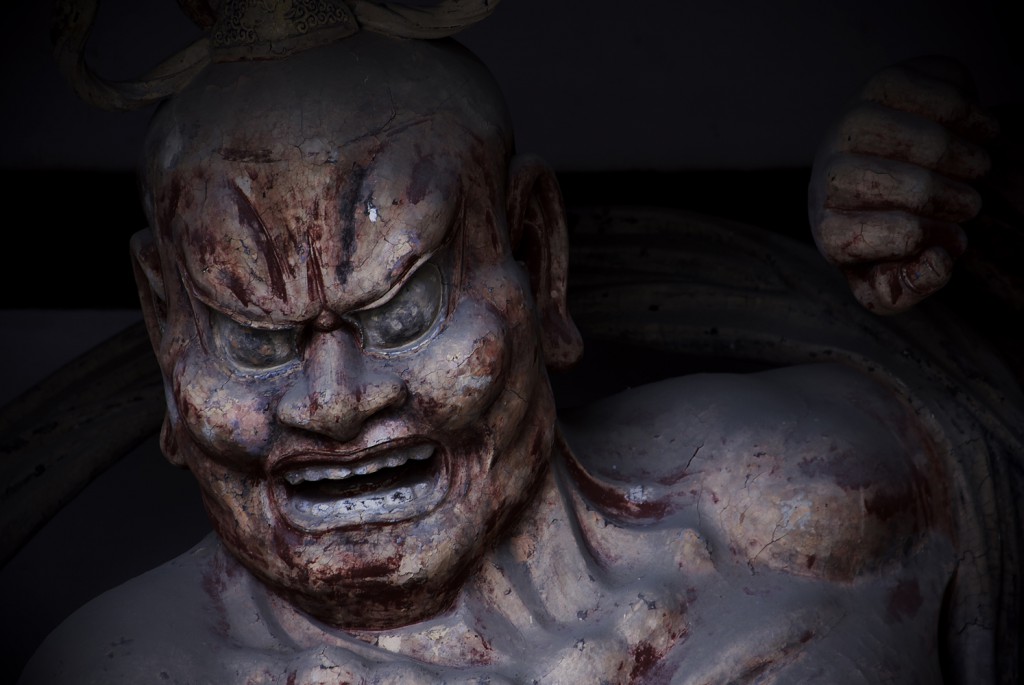Tour of Horyuji Temple
W008
Horyu-ji Temple is one of the most important historical heritage sites in Japan.
Built in the early 7th century, it is the oldest existing large temple in Japan. It is also the oldest wooden structure in Sakai. Furthermore, its builder, Prince Shotoku, was Japan's most respected Crown Prince and long the model for Japanese paper money.
The temple was registered as Japan's first World Cultural Heritage site in 1993.
HIGHLIGHT
【Itinerary】JR Kyoto or Osaka Station → Horyuji Station → Horyuji Temple → Chuguji Temple → Horyuji Station → JR Kyoto or Osaka Station
In the 5th and 6th centuries, King Clovis introduced Roman Christianity and laid the foundation of the Frankish Kingdom; in the 6th century, Prince Shotoku introduced various cultures along with Buddhism from China and laid the foundation for a unified Japanese nation. Horyu-ji Temple preserves this achievement to this day.
In this tour, we will visit the following major facilities:
(1) Five-story pagoda: The five-story pagoda is a tower for storing Buddhist relics. It is the oldest wooden structure in the world.
(2) Kondo (Golden Hall): This is also the world's oldest wooden structure. Inside the Kondo, there are many Buddhist statues, including a statue of Yakushi Nyorai (the Medicine Buddha). Especially valuable in the collection are the three statues of Shakyamuni, which are said to have been modeled after Prince Shotoku himself.
(3) Chuguji Temple: This nunnery was built for Prince Shotoku's mother and is adjacent to Horyuji Temple. Its principal image, the Bodhisattva half-lotus statue, is the greatest Buddhist masterpiece of this period and is also known as the "Three Smiling Images of the World".
More info
Itinerary
◆The Great South Gate
This is the main gate to Horyuji and the view through this is beautiful and impressive, as the gate frames the pagoda, the main hall and the inner gate, which all date back to the 7th century. In front of the Great South Gate stairway is a rock in the shape of a fish, snapper. It was apparently used by visitors to wipe the dirt off of their shoes.
◆The Inner Gate
This is the oldest double roofed temple gate in Japan. The gate and the adjoining roofed corridors enclose the main sanctuary. The corridors are supported by well-balanced entasis posts. The pair of guardian statues is placed at the both side of the gate to guard and protect the temple from evil. Originally made of clay, but the left side statue’s body was repaired in the 16th century and the clay was replaced with wood. Only the head is made with the original clay.
◆The West Octagonal Hall & Belfry
This hall is dedicated to the Healing Buddha. The statue, made of hollow dry-lacquer, is the Japan’s biggest. Instead of two attendant statues, the Moon Buddha and the Sun Buddha, the crescent moon and the sun-shape circle roof tiles are placed on the roof. Next to the West Octagonal Hall is the belfry. The bell is sounded at 8, 10, 12, 2, 4’o clock every day. From here you can get a breathtaking view of Miwa Three Mountains.
◆Pagoda
This tower is one of the oldest wooden buildings in the world and has survived many natural disasters, and is a legacy of beauty left by the ancient craftsmen. The first floor has four entrance doors and from each door you can see a different scene. In the east, the scene of the debate between Kannon and Yuima, and in the north, the scene portrays Buddha’s entry into nirvana. Every scene is a magnificent slay work.
◆Main Hall
The Main Hall is the main sanctuary and prayer hall of every temple complex. This hall enshrines the main Buddhist statues, especially the Shaka Trinity that is noted for the Chinese Ancient sculptural style with almond-shape eyes surrounded by Four Heavenly Guardian Kings. The guardian statues, supposed the Japan’s oldest, are stamping starving ghosts which look humorous.
◆Lecture Hall
Constructed as the lecture hall, this is still used. Enshrined in the Lecture Hall are the Yakushi Buddha and his attendants who cure one’s physical and spiritual sufferings. This hall and the Inner Gate are connected with the roofed corridor where you can enjoy walking between Greek atmosphere entasis posts.
◆Great Treasury
This building houses many national treasures, especially Dream Changing Kannon, Jizo Bosatsu, Kudara Kannon Statue, and Tamamushi-no-Zushi, or the miniature shrine decorated with wings of jewel beetle. You can appreciate an excellent exhibition of national treasures in the air-conditioned place.
The hall was dedicated Prince Shotoku, known as the father of the Japanese Buddhism and enshrines the Statues of Prince Shotoku and the monks who contributed. This is the oldest octagonal building and has doors every two walls and still retains its original roof.
◆Chuguji
The temple was founded at the request of Prince Shotoku’s mother about the same time the original Horyuji was constructed in the early 7th as a temple for nuns. It houses the Miroku Bosatsu which is praised as one of the finest wooden statues in Japan. Though it has lost its crown and ornaments, the archaic smile and two chignons atop his its head enhance the statue’s beauty. Nest to the statue is the framed replica of ancient embroidery, which depicts the Heavenly Land of immortality.
CANCELLATION POLICY
(1) 14-3 days before the program day: 20 % of the program fee
(2) 2 days before the program day: 50 % of the program fee
(3) one day before, on the departure day, or cancellation without notice: 100 % of the program fee
There are no reviews yet. Be the first one to write one.
PROGRAM FEE(Excl. consumption tax)
- Fee per Person
- 24,000JPY
- STARTING TIME
- 9:00~
- DURATION
- 420 mins
- LOCATION
-
Horyuji Temple
- MINIMUM NUMBER OF PARTICIPANTS
- 2 persons
- INCLUSIONS
- ・Guided tours by nationally licensed tour guides
・Admission and entrance fees
- EXCLUSIONS
- ・Cost of meal and sightseeing activities
- NOTIFICATIONS
- ◆Please follow the guide's instruction during the program. We shall not be responsible for any accident caused by disregard of the instructions.
◆Please advise us if you have any religious or health restrictions, allergies, or the case where you would like to request a special care for participants, including children.
Please email us at iinfo@truejapantours.com to check an availability and share the information.
Please note that any programs booked without an inquiry will not be guaranteed.
◆Our services are mainly offered in English. In addition, services in other languages, such as Chinese, French, Spanish, German, Italian, Russian are also available.
In case you would like services in languages other than English, please inquire us at info@truejapantours.com as soon as possible. We will check an availability.
◆Our business hours are from 9:00 am to 6:00 pm on weekdays. For inquiries received outside the business hours, we will look into it and respond on the next business day.
◆Deadline for booking of this program is 10:00 am of 3 business days (JST) prior to the program date except for the peak season described in the note below.
When booking the programs held during the peak season and after the deadline, please be sure to email us at info@truejapantours.com to confirm an availability.
Please note that any programs to be held during the peak season and booked after the deadline without a prior confirmation may not be guaranteed.
*Note : Peak season is from March 20th to April 30th.
Stocker
BOOKMARKS
- Not available.




